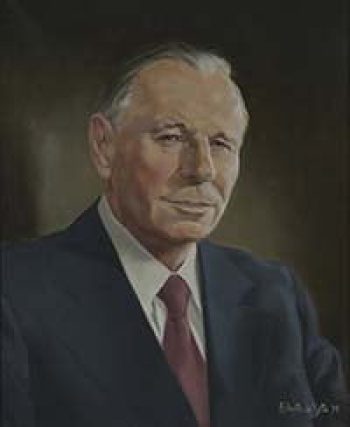J. Elgin Armstrong
- Canadian Agricultural Hall of Fame
- Inductees
- J. Elgin Armstrong

- Inducted: 1998
- Residing Province: Ontario
- Gallery Location: 141
J. Elgin Armstrong
- (1897
- -
- 1979)
Joseph Elgin Armstrong pioneered in breeding Holstein cattle and Standardbred horses, which excelled nationally and internationally. One of the first farmers to grow alfalfa in Peel County, he developed a reputation as a grower and custom thresher of alfalfa and clover seeds. His alfalfa seed captured prizes at the very first Royal Agricultural Winter Fair in 1922.
Elgin, as perceptive with animals as with crops, had gathered a small growing herd of Holstein-Friesian cattle and by the mid-1940s his bloodstock was world renowned. His ABC Reflection Sovereign became one of the most influential Holstein sires in the world before the herd was dispersed in 1948.
Elgin Armstrong made a lasting influence on breeding Standardbreds and racing Thoroughbreds in England and North America. His first homegrown Thoroughbred, named Armbro, came to the front in the1947 Canadian Oaks but failed to hold the win. Later the name Armbro became a hallmark prefix in Standardbreds.
The Armbro horse operation shared a location near Brampton with the construction company operated by the Armstrongs. Performance of Armstrong horses in the 1954 Queen’s Plate led to a 1955 junket to England, which culminated in the purchase of nine Thoroughbreds and some success on British turf. At the Sussex Stakes in Goodwood, the Queen’s colt was beaten in a photo finish by My Kingdom, a Canadian horse owned by Elgin Armstrong.
Armstrong had an eye for good racers and broodmares among Standardbreds as well. In 1952 he bought a filly on the spot in Florida, and in 1953 this horse, Helicopter, was the winner of the coveted Hambletonian. She brought forth Armbro Flight, a Canadian Horse of the Year for three straight seasons and holder of many world records. Armbro Omaha turned out to be the richest horse of 1974, capturing an unprecedented five $100,000 races to give Armstrong his first Little Brown Jug victory. In the sales rings, Armbro yearlings, with their deep pedigrees, are in great demand.
The Armstrongs opened 1,100 acres in 1979 near Inglewood for the expanding horse operation. Since then, the Armstrong operation has grown to be the largest Standardbred breeding operation in Canada and the second largest in North America. Many of the Armstrong Farms’ world champions and stakes winners have become great broodmares.
Elgin Armstrong was director of the Ontario Jockey Club, the Hambletonian Society, the Standardbred Breeders’ Association, and the Hall of Fame of the Trotter. He was 1974 Horseman of the Year and posthumously named a Builder in the City of Brampton Sports Hall of Fame. Elgin Armstrong was inducted into the Canadian Horse Racing Hall of Fame.
Elgin Armstrong, of Armstrong Farms and Armbro, has earned a place in the Canadian Agricultural Hall of Fame.
Joseph Elgin Armstrong fut un pionnier dans l’élevage de bovins Holstein et de chevaux Standardbred, lesquels sont
renommés au niveau national et international. L’un des premiers agriculteurs à cultiver de la luzerne dans le comté de Peel,
il a développé une réputation de cultivateur de luzerne et de producteur de graines de luzerne et de trèfle. Sa semence de
luzerne a remporté des prix à la première édition du Royal Agricultural Winter Fair en 1922.
Aussi bon avec les animaux que les cultures, Elgin, avait rassemblé un petit troupeau de bovins Holstein-Friesian et au
milieu des années 1940, son troupeau de pur-sang était renommé à l’échelle mondiale. Son taureau ABC Reflection
Sovereign est devenu l’un des taureaux Holstein les plus influents dans le monde avant que le troupeau ne soit dispersé en
1948.
Elgin Armstrong a eu une influence durable dans l’élevage des Standardbred et les courses de Thoroughbreds en
Angleterre et en Amérique du Nord. Son premier Thoroughbred élevé au Canada, nommé Armbro s’est illustré à l’édition
de 1947 du Canadian Oaks, mais n’a pas réussi à obtenir la victoire. Plus tard, le nom Armbro est devenu préfixe réputé
pour les Standardbred.
L’élevage des chevaux Armbro était situé près de Brampton à même l’entreprise de construction de la famille Armstrong.
L’excellente performance de chevaux de la famille Armstrong dans la Queen’s Plate de 1954 les a amenés à une tournée
en Angleterre en 1955, qui a culminé par l’achat de neuf Thoroughbreds et un certain succès sur la pelouse britanique. Au
Sussex Stakes à Goodwood, le poulain de la Reine a été battu dans une course avec photo témoin par My Kingdom, un
cheval canadien appartenant à Elgin Armstrong.
Armstrong avait un œil pour des bons courseurs et les poulinières parmi les Standardbreds. En 1952, en Floride, il a acheté
sur le coup une pouliche et en 1953, ce cheval, Helicopter, a été le vainqueur de la course Hambletonian. Cette jument a
mis au monde Armbro Flight, le cheval canadien de l’année pendant trois saisons consécutives et titulaire de nombreux
records du monde. Armbro Omaha sera le cheval le plus rentable de 1974, gagnant sans précédence de cinq courses de
100000 $ pour donner à Armstrong sa première victoire Little Brown Jug. Dans les arènes de vente, les poulains Ambro
sont en grande demande.
En 1979, les Armstrong ont acquis quelques 1 100 acres près d’Inglewood pour l’élevage de chevaux devenant la plus
grande ferme de reproduction Standardbred au Canada et la deuxième en Amérique du Nord. De nombreux champions
mondiaux d’Armstrong Farms sont devenus des animaux reproducteurs.
Elgin Armstrong a été directeur de l’Ontario Jockey Club, la Société Hambletonian, the Standardbred Breeders’ Association,
et du Hall of Fame of the Trotter. En 1975, il a été nommé Horseman of the Year et à titre posthume, nommé Constructeur
du Temple de la renommée des sports de Brampton. Elgin Armstrong à été intronisé au Temple canadien de la renommée
du cheval de course.
Elgin Armstrong, des fermes Armstrong et de Armbro, a gagné sa place dans le Temple de la renommée de l’agriculture
canadienne.
- Canadian Standardbred Horse Society


